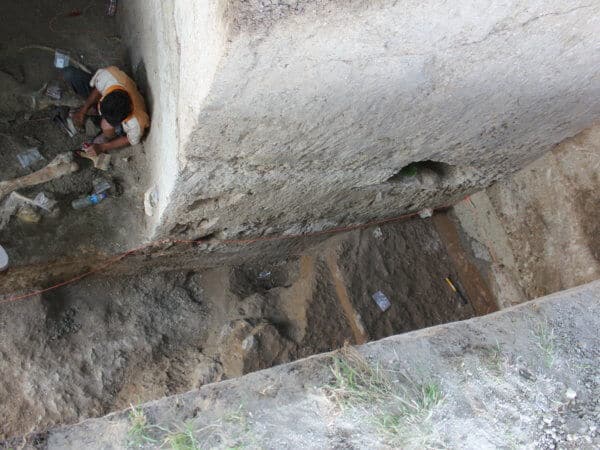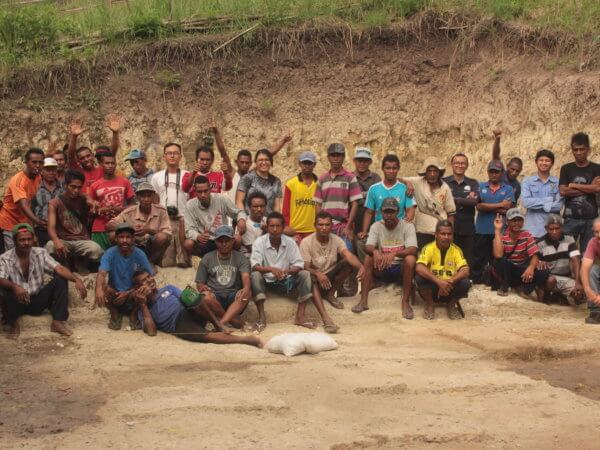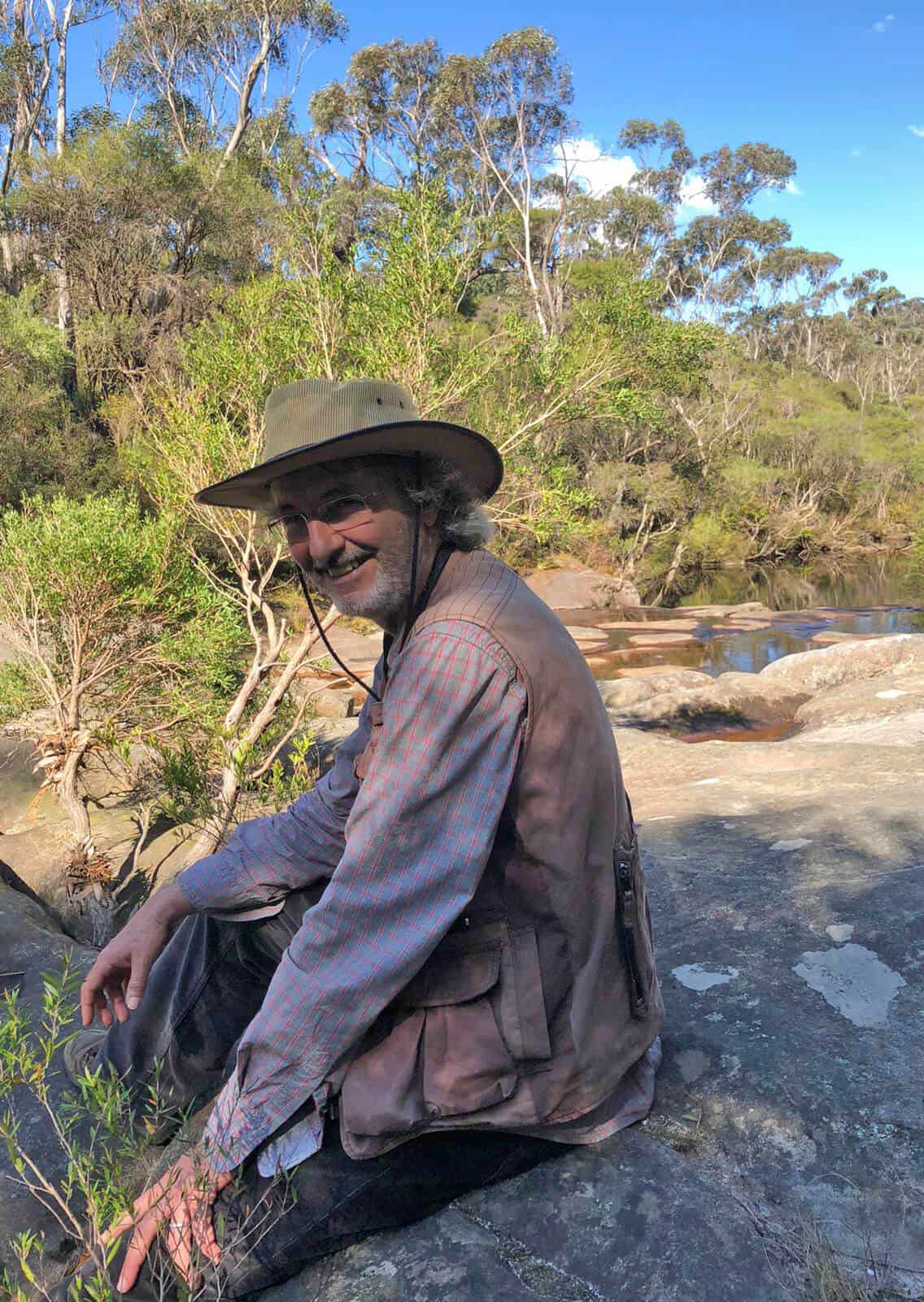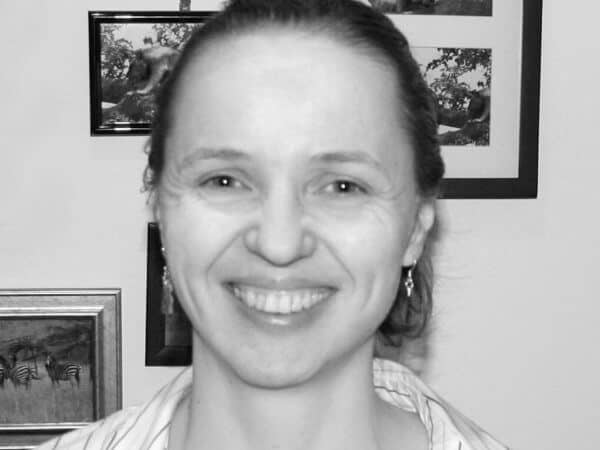From caves in Siberia, to trips to the Apennines, we speak about Dr Gerrit van den Bergh about his career in palaeontology.
Dr. van den Bergh, thank you for taking the time for this interview. What was your motivation that drew you to the field of archaeology and palaeontology?
Thank you for inviting me to this interview. To answer your first question alone I could write a book about it. There are so many influences that one can recall in hindsight, influences that have contributed to a person’s motivations and interests.
But I’ll restrict myself to what I think have been the most important influences in becoming a palaeontologist and archaeologist.
To start at the beginning, I have to go back a long time, to the late 1960s when I was at primary school in the Netherlands – we lived near The Hague.
As kids, we all had the good fortune of being able to play freely in the adjacent meadows and wastelands. We made huts, climbed trees, explored abandoned houses, constructed miniature dikes and waterworks in the ditches separating the meadows, caught all kinds of critters in the canals and put them in aquariums, and much more.
As a kid I had pet salamanders, water beetles, little fish, loaches, mice, gerbils, a budgerigar (not all at the same time though). I collected all kinds of objects that we dug up or found on the surface: pretty stones, centuries old clay pipes, animal bones and skulls, fossils, you name it.
We also made electric switchboards with little lamps and bells, and once I constructed a 3D labyrinth from toilet rolls cast in gypsum, including a little periscope and light bulb inside, for my gerbil family to play in (the first thing they did was gnaw the electric cable inside the labyrinth, so they had to find their way in the dark, which they managed perfectly, although I couldn’t observe them inside anymore with my periscope).
Varying Interests
Although my parents did not actively encourage these activities, they allowed me the space to pursue them. At some stage, on my request, my mother asked her butcher if he had some animal skulls that she could have for her son, which he did.
I put skulls of horses and cows in the ground, and later dug them up, painted them, made lamps out of them, some of which I sold in the local street markets.
That is how I came into direct contact with nature. You can read about the natural world in books (which I also did excessively), but it is different when you are exposed directly to all kinds of animals, and things you find under or above ground. I think this exposure is what a lot of kids growing up in cities nowadays might sadly lack.
I didn’t really have a favourite interest or specialization yet, my interests stayed very wide. And my experience is that what you end up doing later in life depends to a large extent on coincidences.
When I left high school in 1979 it was clear that I was going to university (I was of the first generation in my family to do this). Initially I wanted to become a veterinarian, but my grades were not enough, so I enrolled in geology.
I didn’t really know what geology was, even though I had collected stones and fossils. But I read in the course guide that you must be willing to travel outside the Netherlands and work in the field a lot, which was absolutely what I wanted to do.
Trips
After the first year’s geology excursions to the Ardennes in Belgium and the Eiffel in Germany, and fieldwork in the Apennines in Italy, I was sold on studying Earth Sciences, but I think it could equally have been biology, physics, history or engineering. I now know, of course, that any subject can become interesting when you delve deeper into it.
Another coincidence is what kind of lecturers you encounter. I had a wonderfully passionate lecturer in Vertebrate Palaeontology, the late Paul Sondaar, who, together with my supervisor at the Natural History Museum in Leiden, John de Vos, mentored me to the position where I am now, at the University of Wollongong in Australia.

Although I’m not completely sure what my specialisation is this days. Am I a palaeontologist or an archaeologist?
Of course my formal training was in Earth Sciences, of which palaeontology is a sub discipline. But nowadays I also do research on the early migrations of early human ancestors and their ways of living, subsistence and toolmaking – which is basically archaeology.
Palaeontology
When we talk about palaeontology, an average person mostly imagines dinosaurs. In lay person’s terms can you tell our readers about what palaeontology is?
Palaeontology is the study of fossils, which are the preserved and most often petrified remains of plants or animals that lived long ago, which of course includes dinosaurs.
But also the frozen remains of mammoths. People who study dinosaurs are not archaeologists though, that is a widespread misconception.
Archaeology exclusively deals with past human life, and humans did not exist 100 million years ago when dinosaurs were the dominant animals on the globe (although some people called ‘creationists’ want you to ignore the enormous body of scientific proof and make you believe that humans and dinosaurs co-inhabited the earth in the past).
Palaeontology is a very broad field, ranging from the study of tiny microscopic fossils of pollen or unicellular organisms from the sea, or even smaller, bacteria, to the giant dinosaurs.
Over the last decades the field has significantly expanded by the study of preserved ancient fragments of DNA extracted from fossils, including fossil hominins such as Neanderthals.
There is even an extinct human ancestor called “Denisovans”, for which we have more information on their DNA rather than about their physical shape, because to date there are only a handful of fossil bone fragments and teeth known of them.
Caving In
But because we do have partially preserved DNA that was initially extracted from a tiny finger bone excavated from Denisovan Cave in Siberia, researchers have been able to determine that the fossil belonged to a female that belonged to a lineage genetically distinct from our own ancestors at the time. Since that first find more than 10 years ago, additional fossils containing DNA have been analysed, and we now know that Denisovans interbred with both Neanderthals and our own species, Homo sapiens.
The DNA evidence suggest that they were dark-skinned and had dark eyes, and that part of their DNA lives on in modern human populations.
Humans generally want to know where they came from and who their ancestors were, and modern palaeontology is able to create an increasingly accurate picture of the human past, and of course the other organisms that they encountered and interfered with. But that is just one aspect of palaeontology.

Palaeontology is also hugely important in reconstructing past climatic and environmental changes and fluctuations that have influenced life on earth.
Just to give you one example: the fossil skeletons of tiny microorganisms living in the sea, called foraminifera, preserve a chemical signature that allows us to reconstruct the temperature of the water in which they once lived.
By analysing and reconstructing the temperatures of thousands of fossil foraminifera skeletons obtained from cores drilled in the sea bottom, and precisely dating the sediments in these cores, scientists have been able to reconstruct how sea water temperatures have fluctuated in the past.
Sea water temperatures are very important in determining climates, and hence, such data are one piece in the enormous complex puzzle of what causes and influences climate change, which is one of the most important questions of our time.
Dr. Gerrit D. van den Bergh is senior lecturer at the University of Wollongong, Australia in the Centre for Archaeological Science, School of Earth, Atmospheric and Life Sciences.
Part Two of our interview with Dr van den Bergh will be released next week.
Photos: Dr van den Bergh
Support us!
All your donations will be used to pay the magazine’s journalists and to support the ongoing costs of maintaining the site.
Share this post
Interested in co-operating with us?
We are open to co-operation from writers and businesses alike. You can reach us on our email at [email protected]/[email protected] and we will get back to you as quick as we can.










